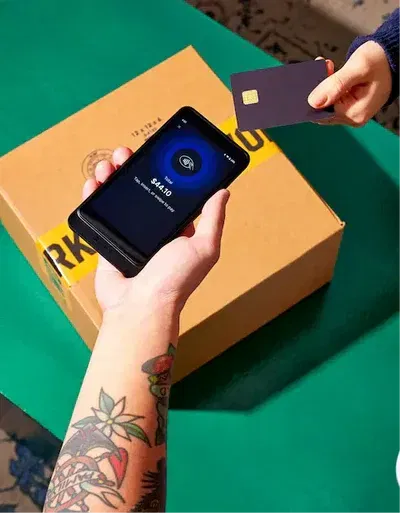10 Playful and Interactive Websites That Redefine User Experience
Introduction: Websites That Play Back
Ever visited a website that made you smile, click around just for fun, or feel like you were part of the story? That’s the power of playful and interactive websites.
In an era where attention spans are shorter than a TikTok loop, creating interactive internet sites is no longer a novelty—it’s a necessity. These sites go beyond static pages. They engage, surprise, delight, and convert.
In this article, you’ll find out what makes cool interactive websites so powerful, how you can use fun website elements, and which brands are absolutely nailing it. Plus, I’ll share ideas, tools, and tips for your own interactive web design.
| Section Title | Key Concepts | Detailed Information | Suggested Visuals |
|---|---|---|---|
| Introduction | Purpose of interactive websites | Introduces the appeal and effectiveness of playful digital experiences. | None |
| What Are They? | Defining interactive design | Interactive websites respond to user actions with animations, storytelling, and gamification. | Screenshot with hover effects |
| Why It Works | Homepage impact | Boosts engagement, time on site, and conversions through dynamic user experience. | Infographic: Static vs. interactive homepage benefits |
| 15 Examples | Real-world inspiration | Showcases 15 top sites with playful design—from Spotify Design to Paper Planes by Google. | Grid of thumbnails or homepage demo gifs |
| Fun Website Elements | Design features | Lists elements like microinteractions, scroll effects, gamification, and drag-and-drop tools. | Illustrated chart or labeled screenshot |
| Tools to Use | Development platforms | Highlights Webflow, GSAP, Lottie, Three.js, and Framer for creating interactive experiences. | Tool logos or interface screenshots |
| UX Best Practices | Functional fun | Emphasizes navigation clarity, responsive design, and animation for usability—not just flair. | Table: “Do’s and Don’ts” of interactive design |
| Data & Metrics | Quantifiable benefits | Lists stats on engagement, bounce rate, and conversion impact of interactive content. | Bar graph comparing static vs. interactive site performance |
| Tips for Creators | Implementation advice | Recommends storyboarding, testing, and balancing animation with purpose. | Checklist or design process flowchart |
| Conclusion | Final call to action | Encourages readers to add interactive elements to improve user experience and branding. | None |
Section 1: What Are Playful and Interactive Websites?
Playful and interactive websites are digital experiences that respond to user actions with animation, gamified elements, or storytelling mechanics. They invite exploration rather than passive scrolling.
Key Traits:
- Responsive animations or transitions
- Hover effects and microinteractions
- Gamified experiences
- Storytelling-driven navigation
- Interactive quizzes, sliders, or mini-games
Insert image: Screenshot of a homepage with hover-triggered animations
Section 2: Why Interactive Homepage Design Works
Your homepage is your first impression—and interactive elements help you:
- Engage users instantly
- Reduce bounce rates
- Increase time on site
- Guide users toward CTAs
Great interactive homepage design can even boost conversion rates by making forms, buttons, and calls to action more intuitive and rewarding.
Suggest infographic: “Benefits of Interactive Homepage vs. Static Homepage”
Section 3: 15 Best Interactive Websites That Inspire Us
Here are 15 great interactive websites that masterfully combine creativity, design, and engagement:
| Website | Industry | Why It’s Awesome |
|---|---|---|
| Rimowa.com | Luggage | Scroll-based product stories & 3D animation |
| Spotify.design | Tech/Design | Responsive illustrations and playful UX |
| Species in Pieces | Education/Art | Origami animal morph animations |
| The Cool Club | Retail | Interactive cards + draggable design |
| Bruno Simon Portfolio | Developer Portfolio | Full driving sim interface in WebGL |
| Resn.co.nz | Creative Studio | Experimental cursor reactions & video loops |
| Refokus | Web Agency | Grid shuffling and kinetic text |
| Paper Planes by Google | Experiential Web | Throw virtual planes across the world |
| Nurture Digital | Agency | Auto-play case studies with animated hover |
| Active Theory | Digital Studio | VR-ready design & click-to-explore features |
| Canals Amsterdam | History/Travel | Interactive timeline and map tours |
| Apple AirPods Max | Product Page | Scroll-activated 3D transitions |
| Superlist | Productivity Tool | Parallax + floating bubbles |
| I Weigh by Jameela Jamil | Activism | Floating cards & feedback prompts |
| Nomadic Tribe Game | Game Teaser | Interactive scroll + tribal lore storylines |
Insert gallery grid: Thumbnails of each homepage with interaction demo gifs
Section 4: Website Elements That Make a Site Fun and Engaging
Want your own site to have that interactive web page design magic? Use these elements:
1. Microinteractions
- Button hovers, checkbox animations, input feedback
2. Scroll Effects
- Parallax, fade-in reveals, progress bars
3. Drag-and-Drop Mechanics
- Useful in portfolios, games, or product builders
4. Gamification Elements
- Badges, progress meters, quizzes
5. Interactive Forms
- Real-time validation, auto-fill animations
Suggest illustration: “Website Elements That Add Playfulness” chart
Section 5: Best Tools to Create Interactive Websites
No need to code from scratch. Here are tools for building interactive websites:
| Tool | Type | Best For |
|---|---|---|
| Webflow | No-code builder | Visual animation, CMS, interactions |
| GSAP (GreenSock) | JavaScript Library | Timeline animations and scroll triggers |
| Lottie by Airbnb | Animation platform | SVG animations via JSON |
| Three.js | JavaScript 3D Engine | Immersive 3D web experiences |
| Framer | Interactive prototyping | Real-time site interactions |
These tools make it easier to integrate website elements fun, even without deep development experience.
Section 6: UX Considerations—How to Keep Playfulness Functional
Fun doesn’t mean frustrating. Here’s how to keep interactive websites user-friendly:
- Don’t hide navigation in clever gimmicks
- Make CTAs accessible even within animations
- Ensure performance with lazy-loading and compression
- Keep responsiveness in mind—test on mobile!
Even the best interactive websites lose points if users get lost or confused.
Section 7: Data-Backed Benefits of Interactive Internet Sites
Stats That Support Playful Web Design:
- 88% of users won’t return after a bad experience (Forrester)
- Interactive content generates 2x more engagement than static content (DemandGen)
- Time on page increases by 62% with animation and interaction (Neil Patel)
| Metric | Static Page | Interactive Page |
|---|---|---|
| Avg. Time on Page | 1:10 mins | 3:05 mins |
| Bounce Rate | 68% | 37% |
| Conversion Rate | 2.3% | 6.1% |
Insert bar graph: Static vs. Interactive UX Metrics Comparison
Section 8: Tips for Building a Cool Interactive Website
- Start with storyboarding: What’s the experience from top to bottom?
- Limit effects per section: Don’t overload users
- Use animation for purpose: Guide attention, not just decorate
- Test interactions with real users
- Keep it fun—but functional
1. What Are Playful and Interactive Websites?
Playful and interactive websites are web experiences designed to actively engage users through animation, interaction, gamification, or immersive storytelling. Rather than presenting content passively, these sites respond to user behavior—clicks, scrolls, hovers, and gestures—with dynamic visual or functional feedback.
This type of interactive web page design helps capture attention, increase dwell time, and create memorable digital impressions that boost conversions and shareability.
2. Why Should I Use Playful Elements on My Website?
Using website elements fun like animated buttons, microinteractions, and scroll-based effects can:
-
Boost user engagement
-
Increase average session duration
-
Improve navigation clarity
-
Create emotional connections with visitors
-
Encourage users to explore more pages
When used well, playful components make good interactive websites great—keeping users interested and guiding them intuitively toward your CTAs.
3. What Are Some Examples of the Best Interactive Websites Today?
Here are a few best interactive websites that combine innovation with user delight:
-
Species in Pieces – Stunning CSS animations of endangered animals
-
Bruno Simon Portfolio – Drive-through 3D WebGL playground
-
Rimowa.com – Scroll-triggered storytelling for luxury products
-
Spotify.design – Playful illustrations with engaging UX
-
The Cool Club – Interactive, draggable playing cards for designers
These cool interactive websites show how design, development, and storytelling converge.
4. How Can I Make My Homepage More Interactive?
To create an interactive homepage:
-
Use scroll-triggered animations (e.g., parallax effects)
-
Add hover states to buttons and images
-
Embed video or sound elements
-
Include a CTA with visual feedback (e.g., bounce, glow, animate-on-click)
-
Introduce guided storytelling or a progress bar
Even subtle interactive homepage features improve UX and reduce bounce rates when applied intentionally.
5. What Tools Can I Use to Build Interactive Websites Without Code?
You can create interactive websites without writing code using:
-
Webflow – Visual builder with built-in animations and interactions
-
Framer – Prototyping tool that converts into live sites
-
Editor X – Advanced layouts with drag-and-drop support
-
Squarespace (limited interactivity) – Great for animated transitions
-
Tilda – Modular web builder with animation blocks
These platforms support interactive web page design through visual interfaces and animations.
6. Which JavaScript Libraries Help Build Playful Websites?
For custom-coded interactive internet sites, consider:
-
GSAP (GreenSock) – High-performance animation timeline library
-
Three.js – 3D and WebGL graphics
-
Lottie – Lightweight animations rendered from Adobe After Effects
-
Anime.js – Clean API for transforming DOM elements
-
ScrollMagic – Trigger animations based on scroll position
These libraries power many of the great interactive websites seen in awards galleries like Awwwards and FWA.
7. What Are Common Features of Good Interactive Websites?
The best interactive websites usually include:
-
Responsive animations
-
Story-driven navigation
-
Microinteractions on buttons and links
-
Unique loading screens or transition effects
-
Non-linear scrolling or gamified user journeys
Such features make the user experience enjoyable, turning every scroll, click, or tap into a meaningful micro-moment.
8. How Do Interactive Websites Impact SEO and Engagement Metrics?
Interactive websites influence key metrics:
-
Time on site increases due to deeper engagement
-
Bounce rate decreases as users explore more features
-
Conversion rates improve with guided navigation and interactive forms
-
Dwell time rises, which may indirectly benefit search engine rankings
When paired with optimized speed and accessibility, interactive internet sites can rank well and perform even better.
9. Are Playful Website Elements Mobile-Friendly?
Yes, but only if designed with responsiveness in mind. All website elements fun must:
-
Adapt to touch gestures instead of mouse interactions
-
Be tested on various screen sizes
-
Avoid heavy scripts that affect performance
-
Maintain usability in low-bandwidth situations
Poorly implemented interactions can frustrate mobile users, so careful testing is essential.
10. What Industries Benefit Most from Interactive Website Design?
Industries where interactive websites shine include:
-
Agencies and freelancers – Portfolios with interactive case studies
-
E-commerce – Product customization tools and animated product reveals
-
Education – Interactive tutorials and infographics
-
Travel – Immersive, scroll-based story pages
-
Gaming & entertainment – Trailers, games, and VR-style showcases
But really, any brand can benefit from a more interactive homepage—if aligned with its audience.
11. Can Too Much Interactivity Hurt My Website’s Usability?
Yes. Overusing animation or adding interactivity just for the sake of it can:
-
Slow down page load speeds
-
Distract users from CTAs
-
Confuse users with unclear navigation
-
Create accessibility challenges
The best interactive web page design balances creativity with clarity. Every interaction should serve a purpose.
12. What Are Some Easy Ways to Make My Site More Fun?
You don’t have to rebuild your entire site. Try these fun website elements:
-
Animated scroll progress indicators
-
Surprise sounds or illustrations on hover
-
Drag-to-reveal content panels
-
Interactive testimonials with sliding transitions
-
Floating elements that respond to cursor position
Even simple effects can elevate good interactive websites to feel more immersive.
13. Are Interactive Websites Harder to Maintain Long-Term?
Not necessarily. If built with scalable tools like Webflow, GSAP, or WordPress with animation plugins, maintenance is minimal.
However, custom-coded interactive websites using frameworks like Three.js or heavy animation scripts may require updates as browsers evolve. It’s important to balance interactivity and sustainability when planning your build.
14. What’s the Difference Between Animation and Interactivity in Web Design?
-
Animation is motion added to elements without user input (e.g., loading bars, transitions).
-
Interactivity requires a user action to trigger something (e.g., clicking a card to flip it).
Playful and interactive websites often combine both—engaging visuals and responsive elements—for a dynamic UX.
15. Where Can I Find Inspiration for Interactive Website Design?
Explore these platforms:
-
Awwwards.com – Best of design + innovation
-
FWA.com – Daily interactive site features
-
One Page Love – Simpler interactive homepage ideas
-
Codrops – Tutorials and real-world animation demos
-
Lapa Ninja – Startup landing pages with playful elements
You’ll see countless great interactive websites that push the boundaries of creativity and functionality.
Conclusion: Make Your Website a Playground That Converts
If you’re ready to go beyond a typical scroll-and-bounce design, it’s time to embrace playful and interactive websites. When done right, they become unforgettable experiences that users want to revisit—and share.
Take cues from the best interactive websites in this list, mix in some fun website elements, and let your brand’s personality shine.
So what’s your next move? Try a microinteraction, build a kinetic homepage, or test out a gamified feature—then watch your users light up.
Link Acquisition Strategy – How to Build Powerful Backlinks for SEO




